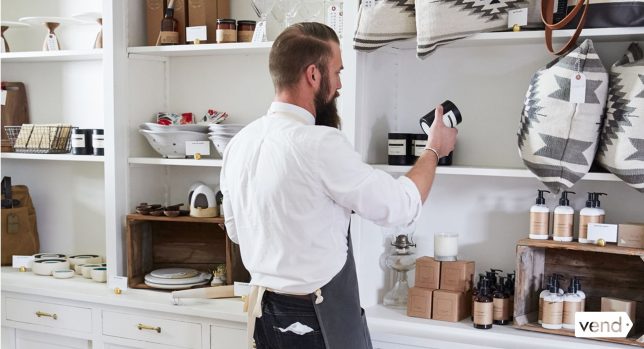Packaging and labeling are essential but individual aspects of getting a product ready for retail. What you need to ensure is that your retail labels are prepared via the following:

1. Safety and Protection
Getting your product ready for a retail outlet starts with protecting it. The container, wrapper or sleeve you use needs to also have a theme. Your focus is in branding, and packaging is the ideal medium to use within a retail store. It’s no surprise that Coca-Cola bottles were intentionally designed as a human figure. Your container is considered marketable real estate. Every inch of that packaging can communicate the benefits you sell. More than that, the right packaging will preserve your product.
2. Precise Labeling and Accurate Information
Here is where we encourage you to think about the consumer. You want to ask about what people are looking for and why. The solution your leads seek should, based on labeling, be evident upon sight. Your labels not only need to convey accurate, fundamental data. Through words, phrasing and positioning, you can also peak your prospect’s interest in buying. Strategy plays a larger role than does bright colors or fancy slogans. Confirm what your buyers want, and display it on a brand label.
3. Alignment of the Product Visual and Your Brand
With great potential for creativity, labels, ideally, position your trademark or logo. It’s important that your consumer realizes who they’re buying from. Not only are you building future sales via labeling, but you’re ensuring that your buyers avoid making an error. Having your visuals perfected can get your labels seen from aisles away. It’s recommended that you make a huge impact in your messaging. What you must come to terms with is that a brand’s voice can be “heard” via labels.
4. Custom Fonts at Legible Parameters
Having an outside perspective of how your imaging looks is important. Custom fonts and colors might have a personal affect over us, but we need a buyer’s perspective first. Confirming that your hunches are right starts with seeing how others interpret your packaging. Your objective is always to simplify your message so that everything legible is simple. Complex ideas must be concise, or they’ll never grab your lead’s full attention. Keep your words relevant to the product you’re selling.
5. Current Stock to Meet Consumer Demand
Delivering the right store of products calls for an understanding of your demand. The scarcity of your product is important when generating demand for it. Retail customers who see endless copies of your product, for example, might assume the worst. They might, instead, retrieve a competitor’s choice that only has a few copies left. Producing more stock than you need is costly. Even more, doing so reveals a flawed understanding of your consumer. Before launching, know exactly how much you need.
6. Packaging and Labeling at Viable Costs
Being visually strategic is necessary in your packaging, but being extravagant can cost you. Your retail displays have gone overboard if you’re paying too much for them. Keep track of your revenue projections during any fiscal year. Those projections must outperform your marketing costs. Reduce your costs via practical packaging and simple labels.
7. The Ideal Location to Display It
Some businesses outperform their competitors by virtue of location. These cases don’t call for the successful business to be the best option. Where people see your message dictates how much you can say. Now is the ideal time to strategize “location.” Location, as it applies to shelf space, determines if people see your product first or last. In both cases, your aim is to make a big impression.
Your next step is simple. Perfect your retail labels now before going to market, and right here is how.
Leave a Reply